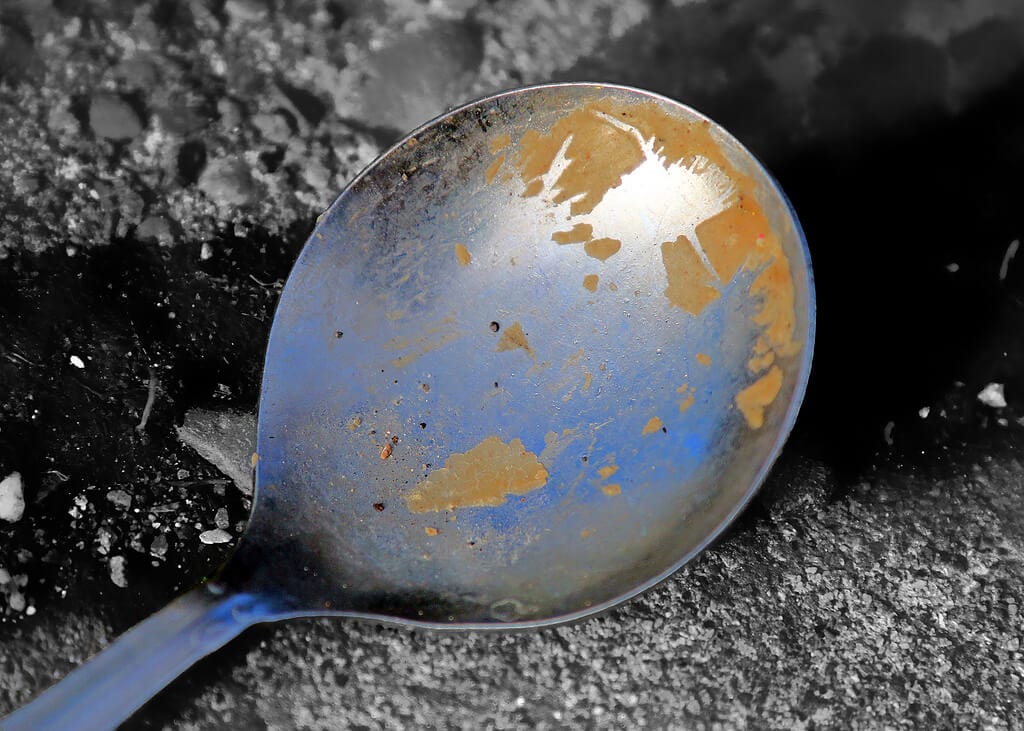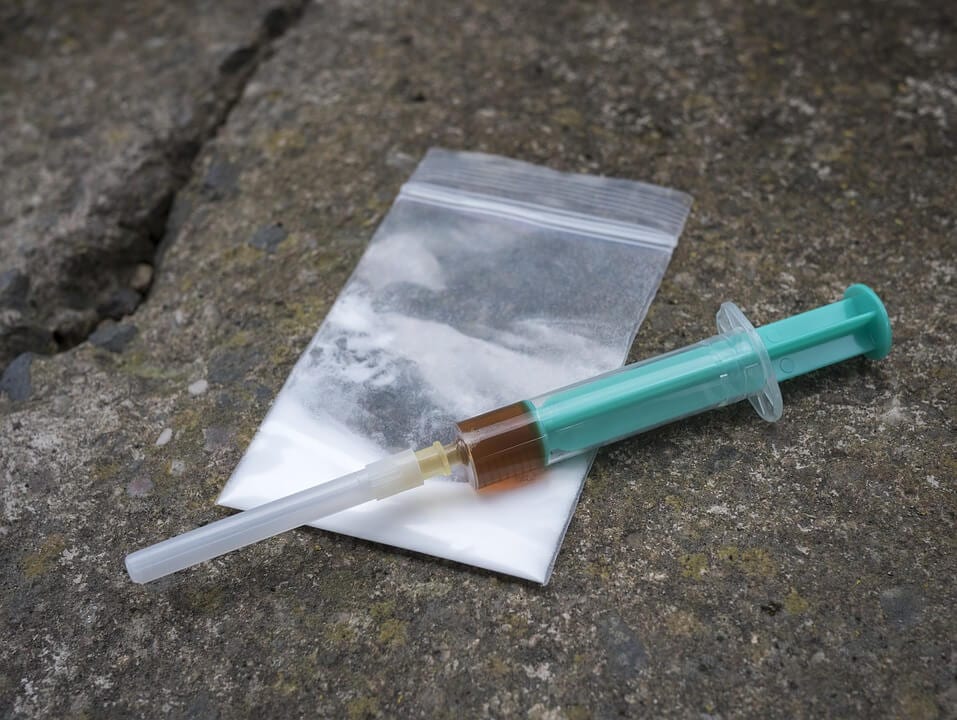
Heroin, or diamorphine, is an opioid drug synthesized from the naturally-occurring opium poppy, a flower indigenous to Asia, South America, and Mexico. As a schedule I narcotic in the United States, heroin has no approved medical uses but is a popular recreational drug because of the euphoric effects it produces.
The purest type of heroin resembles a fine white powder, although it is readily found as a dark brown powder or as a black substance called black tar heroin that is either sticky or dry and hard.
Slang or street names for heroin include the following:
- Dope
- H
- Smack
- Junk
- China white
- Horse or white horse
- White lady
- Brown
- Mexican mud
- Tar or black tar
- Skag
The Opioid/Heroin Epidemic
In recent years heroin use has skyrocketed to epidemic proportions, claiming thousands of lives. Per statistics gathered by the Center for Disease Control and Prevention, heroin-related fatalities surged by 39% from 2012 to 2013. Furthermore, deaths as a direct result of heroin overdose saw a fourfold increase over the 11-year span of 2002 to 2013.
Today, most heroin in the United States is smuggled in from Latin America and both Southeast and Southwest Asia. Substantially pure heroin is rare. Hence, most heroin found on the street is diluted or cut with other substances, such as the following:
- Talcum powder
- Sugar
- Starch
- Powdered milk
- Baking soda
- Flour
- Caffeine
- Crushed over-the-counter pain medication
- Quinine
- Powder laundry detergent
- Rat poison
Heroin may also be cut with fentanyl and carfentanil, which are 50 and 5000 times more potent than heroin, respectively, and are responsible for thousands of overdoses.
How Heroin Works
Heroin, opiates, and opioids are central nervous system (CNS) depressants.
When injured, nerve cells near the site of the injury warn the brain. In turn, the brain engages in survival mode, modulating concentrations of natural painkilling hormones, called beta-endorphins, at opioid receptors throughout the body.
Heroin, other opioids, and opiates also activate beta-endorphins to mitigate pain. Beta-endorphins also possess a secondary effect of suppressing the production of GABA, which in turn inhibits dopamine production in the brain. Subsequently, heroin boosts dopamine concentrations and induces feelings of well-being, happiness, and euphoria.
The area of the brain with the most significant dopamine activity is commonly referred to as ‘the reward center.’ These neural circuits are responsible for the pleasure experienced during rewarding activities, such as eating, sex, securing resources, business or social successes, or virtually anything that we interpret as promoting our biological survival.
Heroin Effects

The feeling of euphoria caused by an intravenous heroin injection is incredibly powerful and overwhelming. Some heroin users report feeling a deep sense of calm satisfaction and warmth that melts away their stresses and concerns.
An intense high that persists up to five hours follows the initial rush. In many cases, a heroin user will be “on the nod,” or “nodding out,” as if balanced in a warm, drowsy state between awake and asleep.
Besides the rush of euphoria, there are several short-term heroin effects, such as the following:
- Dry mouth
- Flushing of the skin
- Heavy hands and feet
- Clouded thinking and impaired judgment
Heroin Addiction
Unlike the steady, proportional ebb and flow of reward chemicals that motivate beneficial conduct throughout everyday life, the brain’s response to heroin is extreme. Heroin causes an influx of dopamine that is disproportionate to one’s circumstances. In fact, some studies suggest that heroin use can multiply neuronal dopamine concentrations as much as tenfold.
Such an oversaturation disrupts and alters otherwise normal patterns of chemical neurotransmission, and long-term abuse adversely reconfigures the entire brain. Alongside this substance-induced physiological transformation comes a corresponding disturbance in behavior.

Heroin triggers sensations of false reward so profound that the mind becomes destructively single-tracked, hell-bent on maintaining the high and often sacrificing itself in the act. The self-sabotaging character of this preoccupation with the drug is what makes heroin addiction, and addiction in general, so remarkably tragic.
A heroin addict can, and often does, speculate and even rationalize why they ought to quit as a matter of ethical principle. And yet, the physical experience of craving heroin is much more real and immediate, thus more important, and is prioritized accordingly.
Signs of Heroin Use
Through repetitive heroin use, a person’s body begins to tolerate greater quantities of the drug. As tolerance increase, the brain requires more and more of the drug to produce the same desired high or to alleviate uncomfortable withdrawal symptoms. Tolerance is the chemical mechanism responsible for drug cravings and, ultimately, addiction.
Apart from a markedly increased tolerance, there are multiple warning signs of heroin addiction, such as the following:
- Mitigating withdrawal symptoms through repeated abuse
- Lacking control over drug consumption
- Revolving life around heroin procurement and intake
- Forgoing activities one once enjoyed
- Avoiding social situations, friends, or family members
- Continuing heroin use despite clear evidence of adverse life consequences
Some psychological warning signs that indicate a heroin addiction include:
- Appearing unreasonably anxious, afraid, or paranoid
- Lacking all motivation and seeming spaced out and lethargic
- Experience unprovoked bursts of energy or mood instability
- Exhibiting unexplainable personality or attitude changes
Heroin Withdrawal
When a person discontinues persistent heroin abuse, a chemical void is left behind where the drug once was. The body requires a substantial amount of time to detox and rebalance, during which a host of unpleasant, often dangerous symptoms arise.
These may include the following:
- Muscle aches
- Agitation
- Repeated yawning
- Runny nose
- Overactive tear ducts
- Sweating
- Insomnia
- Anxiety
- Dilated pupils
- Abdominal cramping
- Nausea
- Vomiting
- Diarrhea
Long-Term Heroin Effects
Heroin has pronounced long-term effects that compromise the brain stem’s capacity to carry out vital bodily functions, such as the following:
- Respiration
- Swallowing
- Heart rhythm
- Blood pressure
- Consciousness
Other long-term physical effects may include:
- Pneumonia
- Collapsed veins
- Liver disease
- Kidney disease
- Infected abscesses
- Infection of the heart valves and lining
- Severe constipation and other digestive issues
Furthermore, because heroin is often laced with other substances, there is an unknown multitude of potentially harmful complications that can arise. Frighteningly, heroin abuse has been correlated with a deterioration of the brain’s white matter, which is partially responsible for decision-making, behavioral control, and stress reflexes and management.
Intravenous heroin use carries with it an increased risk of diseases transmitted through a needle, hepatitis, and HIV, and sharing an unsterile needle dramatically increases these risks. If left untreated, hepatitis B and C can diminish liver function or cause liver failure, and HIV can become AIDS.
Heroin Overdose
As a CNS depressant, heroin affects the brain’s ability to automatically regulate breathing. For this reason, oxygen deprivation in the brain, or hypoxia, can occur and result in permanent brain damage or coma.
Warning signs of a heroin overdose include the following:
- Very slow and/or shallow breathing
- Unresponsiveness
- Bluing of the lips, fingertips, or other extremities
- Gurgling sounds
Treatment for Heroin Addiction
Heroin addiction treatment begins with a medical detox in which the patient is monitored and administered medication to lessen withdrawal symptoms. After detox, patients are encouraged to enter long-term inpatient rehab followed by intensive outpatient treatment.
Our center offers a comprehensive, evidence-based and individualized approach to addiction treatment that includes psychotherapies, counseling, group support, and aftercare planning services.
Recovery is a lifelong endeavor, but you don’t have to do it alone. We have the tools you need to regain your life.
Related: Heroin Withdrawal Symptoms and Detox